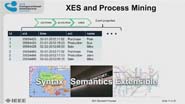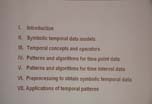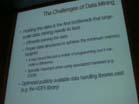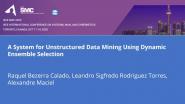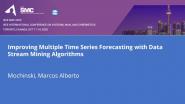Data Mining
Featured Article
Guide to the top data mining algorithms
In today’s ever-expanding technological environment, companies—for instance, in banking, retail, and social media—store large batches of data online and across many systems. Companies can make use of this data and benefit from it through data mining. This article explores how data mining algorithms work and how you can use them. It also looks at some of the top data mining algorithms available today.
To start, data mining is an important step in the larger process of knowledge discovery. It is the process of exploring and analyzing large data sets for patterns, relationships, and trends. Companies engage in data mining to gain useful business insights. For example, a company might use data mining to analyze a group’s buying habits, bank transactions, or medical history to predict the group’s future actions.
People sometimes confuse data mining with data harvesting. However, data harvesting is the process of extracting and analyzing data from online sources. Data mining does not involve “harvesting” data. Instead, it centers on examining data to produce new information.
To do so, data mining typically uses a machine learning method called supervised learning. Supervised learning “teaches” algorithms new processes in data review and analysis. Typically, a supervised learning algorithm views data, applies conditions, acts on the data, and produces results. It then applies the same process and reasoning to new data.
What is an algorithm in data mining?
In general, algorithms employ a series of steps or rules to process data and produce a specific outcome, result, or prediction. Within data mining, algorithms perform functions such as analyzing, classifying, and forecasting data and monitoring data trends.
Data mining algorithms are types of supervised learning algorithms. They use learning algorithm elements like statistics, probability, and artificial intelligence to explore and generate results that benefit companies, industries, and organizations all over the world.
Supervised learning algorithms and other supervised learning methods depend on labeled data. The labeled data includes the algorithm’s expected data output. A simple example is a picture of a dog labeled with the word “dog.” Labeled data helps the algorithm “learn” patterns in the data and later apply these patterns to unlabeled sets of data. In the above example, a labeled picture of a dog could help an algorithm recognize other images of dogs.
Despite their use of labeled data, supervised learning algorithms can predict or estimate unknown data quantities in the future. This is possible as long as the calculations are based on prior patterns in known data.
What is the role of the algorithm in data mining?
Data mining algorithms process large groups of data to produce certain statistical analyses or results for businesses, industries, or organizations. As such, they are a vital part of the data mining process.
A data mining algorithm’s role depends on the expectations of a user, creator, or investor. As we noted previously, many data mining algorithms conduct data analysis on large data sets. Across many fields, data mining algorithms can analyze audio, textual, and visual data according to demographic factors such as age, gender, and income.
For instance, a shoe company might develop a data mining algorithm to uncover the percentage of the company’s stock that women between the ages of twenty-five and thirty own. An organization within the medical field might use data mining algorithms to conduct research on certain diseases and their impacts on different groups of patients. A social media company might use a data mining algorithm to provide facial tagging suggestions.
All of these examples rely on data points, or criteria, that work with a data mining algorithm to produce the best or closest desired outcome.
Many types of data mining algorithms exist to analyze and interpret data and help achieve desired results. Examples include decision trees, support vector machines, k-nearest neighbors, and neural networks. We will discuss these in more depth later.
However, despite this variety in data mining algorithms, the basic underlying process for all of them is similar. Regardless of its specific purpose, a data mining algorithm’s process—taking data and producing a result—remains the same.
What are the main components of an algorithm for data mining?
At a basic level, data mining algorithms contain different elements that, in combination, lead to a result. The main components of data mining algorithms include data, conditions, and expectations (i.e., end goals).
As we discussed previously, a data mining algorithm relies on data to operate. This data usually comes in the form of large data sets that the algorithm reviews and breaks down into smaller data sets. The algorithm breaks down and analyzes data in relationship to variables. Examples of variables include age, gender, salary, and location.
Different types of variables produce different results. Three types of variables that algorithms use are discrete, continuous, and categorical.
Discrete variables consist of finite (countable) numbers. An example is the number of people who attended a concert or the length of a piece of equipment. Continuous variables, in contrast, have an infinite number of values. An example is the date and time a company receives a payment. Categorical variables contain a finite number of categories or groups. These variables aren’t dependent on order. Examples include material type and payment method.
In an algorithm, multiple variables work together to create conditions. When the algorithm applies certain conditions, it produces specific results.
For example, say a company wants to see how many elderly customers buy a certain type of toothpaste. Conditions of the data mining algorithm would include variables such as customer age, toothpaste type, and purchase confirmation. When the algorithm applies these conditions, it can generate the company’s desired result.
Many data mining algorithms also use conditional probability to generate outcomes. Conditional probability involves events and if/then instances. We can look at a coin toss to illustrate this. If I toss a coin, then it will land as either heads or tails. The algorithm “learns” how to understand and use this conditional “language” in order to seek out a specific outcome. Through such language, for example, an algorithm can identify the face of a specific person in a database.
Often, data mining algorithms incorporate Bayes’s theorem of conditional probability and predictive analysis into their data mining processes. Bayes’s eighteenth-century theorem hinges on the fact that one event will likely happen because another event has already happened. Although the theorem is dated, its if/then concepts and approaches remain useful to determine outcomes today. Likewise, predictive analytics offer another way to estimate future impacts on other sets of large data.
How do you write an algorithm for data mining?
Data experts and programmers create data mining algorithms through careful thought, planning, and execution. By establishing input variables, conditions, and output variables, they create algorithms that produce models from data. These models can then predict future data outcomes based on past incidences.
It is important to keep in mind that data programmers write different types of algorithms to create data mining models with specific end goals in mind. Examples of data mining models include the following:
- A classification model to label loan applicants as low, medium, or high credit risk
- A decision tree to predict whether a particular consumer will like a product and describe how factors like age and gender will determine product popularity
- A mathematical model to forecast product sales
- A set of rules to explain the probabilities that a consumer will purchase a group of products together
Classifications are ways of breaking down and comparing data points. For example, the solar system breaks down into classifications such as planets, moons, and stars. If an algorithm tried to label a specific object in our solar system, it would likely consider these different classifications and their connections to each other in its analytical process.
Decision trees resemble classification models. They start with a main idea that breaks down into several other related ideas when an algorithm applies certain factors. In turn, those ideas break down further as the algorithm applies more conditions. Eventually, these “branches” of ideas lead to an end result.
Both human and machine learning use decision trees as part of the decision-making process. Decision trees present data simply and linearly. For this reason, they represent a key approach to data mining.
Mathematical processes are key to identifying correlations in large data sets and then creating predictions. Linear algebra and probability, for example, play an important role in some data mining models.
Rules are also important in data mining models. These rules tell a data mining algorithm where it should act first. Consider, for example, a situation in which you need to know the probability of event A to predict the likelihood that event B will happen because of event A. An important rule in the equation would instruct the algorithm to discern event A’s probability before proceeding to any other calculations.
Once operating, many data mining algorithms work independently, without human supervision. That’s what makes them part of the machine learning family. However, someone must first set up the algorithm and make adjustments as necessary. This is why we categorize data mining algorithms as supervised learning algorithms.
How to use data mining algorithms
Various industries use data mining algorithms for research, investigation, and analytical purposes. These algorithms produce useful insights from the large data sets that companies have at their disposal.
An example of a field employing data mining algorithms for research today is the medical field. Often, doctors and other medical professionals use different data mining algorithms to predict the prevalence of certain diseases, such as heart disease, among a population.
In contrast, law enforcement agencies and social media companies might use data mining algorithms for investigation and analytical purposes. Although for different reasons, both types of organizations might conduct facial recognition searches to confirm a person’s identity.
What should you look for in an algorithm for data mining?
It is important to choose a data mining algorithm that meets your specific needs and goals. As we have discussed above, data mining algorithms vary according to their purpose. If you are considering data mining, you want to ensure that you choose algorithms that fit with your intended purpose.
The ultimate goal of data mining is actionable insight. Finding patterns among large data sets alone might be interesting to an individual or company. But the true value of a data mining algorithm comes from the user’s ability to act on the new information that data mining produces. You should always keep this in mind when evaluating data mining algorithms.
What do you need to write an algorithm for data mining?
Before developers create a data mining algorithm, they must first know the purpose of the algorithm and what it will analyze in terms of both data type and data format. Will the algorithm examine handwriting? Will it examine cell phone photographs? Will it examine shopping tendencies?
In addition to knowing what an algorithm will examine, developers also need an appropriate set of data. Based on the application, data could vary from a collection of sample handwriting or cell phone photos to a large database, such as the history of transactions in a group of retail stores.
Finally, developers need to write an equation that enables the algorithm to test the data. This equation often includes probability and predictive analysis.
How do you measure the efficacy of an algorithm for data mining?
Different algorithms have different levels of efficacy. Testing efficacy sometimes means running data through multiple data mining algorithms in order to see which one produces the best results.
One study in the medical field compared different data mining algorithms’ ability to predict heart disease. When scientists ran data through various algorithms to test for heart disease prevalence, the algorithms produced different results. Some algorithms produced more accurate information and thus proved more useful than others.
Some researchers recommend high-utility itemset mining as a very efficient data mining technique. In this type of data mining, an algorithm searches sets of data for items of high importance to the user. Highly important items might include, for example, specific business transactions, exact medical files, or personal security information.
The development of this type of data mining points to the advancing functionality and promising future of the field. As the world becomes more technologically reliant, more and more data become available. This creates more opportunity for data analysis solutions.
To stay up to date on the latest developments in data mining solutions, check out the IEEE Xplore digital library. Xplore is one of the world’s largest collections of technical literature in engineering, computer science, and related technologies, with five million documents now available in its vast repository. You can search through this library to find out more about ongoing advances in data mining.
Best algorithms for data mining
As mentioned earlier, data mining algorithms fit within the broader category of learning algorithms. Typically, learning algorithms depend on either classification or regression to produce results.
What are the most-used data mining algorithms?
Classification and regression algorithms remain the most-used data mining algorithms available today.
Classification algorithms take data and separate it into groups. Usually the groups correspond to answers to questions, such as “yes” or “no.” Spam filters in email provide a good example of a classification algorithm at work. As an email comes in, an algorithm analyzes its contents (such as sender, subject, and message). Then, the algorithm files the email into either a “yes spam” or “no spam” category.
Examples of classification algorithms are naive Bayes and k-nearest neighbors. (However, you can also use a k-nearest neighbors algorithm as part of a regression model.)
Naive Bayes algorithms use Bayes’s theorem of probability to review data and assign certain classifications to it. For instance, a naive Bayes algorithm might analyze a text to determine its main theme. It might determine, for example, that a text is discussing cats or dogs.
K-nearest neighbors algorithms are some of the simplest and most easy-to-use data mining algorithms today. They have been around since the 1970s. Their main goal is to place a data point into a certain category based on the data around it.
Examples of systems using k-nearest neighbors algorithms include recommendation lists from streaming services such as Netflix or Hulu. These lists take data points (such as movies or TV shows) and recommend similar/related content to users.
Regression algorithms, on the other hand, answer more complex questions related to a data set. Their goal is to discern a relationship between different data points. For example, facial recognition software uses a regression algorithm that gathers and analyzes different data points to verify a person’s identity.
An example of a regression algorithm is a neural network. Neural networks mimic the human brain’s neural paths. Thousands or millions of pieces of information form these complex computer systems. Neural networks use linear regression algorithms to arrive at key decisions.
Both regression and classification models get support from support vector machines (SVMs). An SVM is another type of algorithm. It takes data from regression and classification models and creates graphs from the data. This lends a visual component to the algorithm. SVMs also help separate data into different classifications.
What makes a data mining algorithm popular?
Companies use data mining algorithms to solve many different problems. Consequently, a wide variety of data mining algorithms exist today. You can fine-tune each algorithm to solve a particular problem.
Generally speaking, a data mining algorithm’s popularity hinges on its ability to provide detailed answers to questions concerning big data. These answers can help users predict an event or trend or, more broadly, the future of an industry. But they also help users with tasks such as avoiding spam in their email inboxes or choosing a nightly TV show.
How do algorithms vary from data mining project to project?
All in all, algorithms are versatile. Likewise, their use varies across many projects in different industries. Some projects call for specific types of algorithms. For example, one project might require an algorithm that can test for classification-based outcomes. Another might require an algorithm that can test for regression-based outcomes.
Additionally, some projects depend on multiple algorithms to work. For instance, the results from one algorithm might help produce results that are used by a second algorithm.
Top software packages for using data mining algorithms
Today, companies often choose to invest in software packages that make data mining easy and approachable. Many of these software packages offer the added bonus of providing data managing and storage services in addition to data mining algorithms and tools.
As we have stated above, data mining algorithms vary according to their intended purpose. As such, users should choose a data mining software package that fits with their specific needs.
What software is available for using data mining algorithms?
Software packages reduce the need to produce algorithms from scratch. Likewise, they provide different data analytics tools that aid algorithms and help the user get desired results. Examples of such tools include artificial intelligence and predictive analytics.
Popular software packages such as Alteryx Analytics, Orange, and KNIME contain data analytics tools like these. They also contain additional features that appeal to users. These include, for example, data visualization and display features and accessibility across multiple platforms.
What should you look for in software for using data mining algorithms?
You should keep your goals in mind when considering software options. When you choose software, you should make sure its offerings match your data mining vision. For example, you might want a system that creates visual displays, such as charts and graphs, from a data mining algorithm’s output information. In this case, you want to make sure the software you invest in includes data visualization among its features.
Likewise, you should consider the package’s accessibility options. For instance, can Mac and PC users access the software equally as easily? Is there a cloud-based storage system or a Software-as-a-Service (SaaS) option? What does the package’s interface look like? How would the interface affect your ability to explore and utilize the software?
Furthermore, you might benefit from a software package that you can add paid or free features to over time. Some software packages allow users with a valid product license to freely download or purchase additional features. The future of data mining looks promising. Because of this, having the ability to add features might be especially important going forward.
What are the best free and paid options for data mining algorithm software?
Software packages and their offerings vary according to their monetary value. Often paid-for packages include more high-tech, innovative, and appealing elements. In contrast, free versions generally contain fewer features. However, quality free options do exist.
According to a conference paper on free software tools for data mining, the best free offerings include RapidMiner, Weka, R, KNIME, Orange, and scikit-learn. Many of the companies behind these free tools also offer data mining services.
Paid-for options include Sisense, Neural Designer, and Alteryx Analytics. These companies focus on different data mining tools, such as analytics, machine learning, and business intelligence, respectively.
Ultimately, as technology continues to improve, the variety of data mining algorithms and software packages will likely continue to grow. So too will the importance and potential value of data mining as a field continue to grow in the future.
Interested in becoming an IEEE member? Joining this community of over 420,000 technology and engineering professionals will give you access to the resources and opportunities you need to keep on top of changes in technology, as well as help you get involved in standards development, network with other professionals in your local area or within a specific technical interest, mentor the next generation of engineers and technologists, and so much more.
